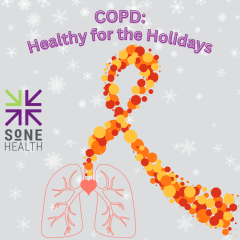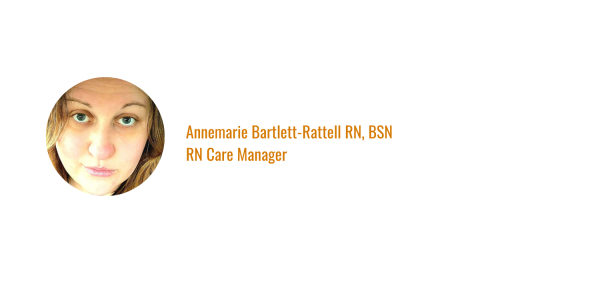 By: Annmarie Barlett-Rattell, RN, BSN
By: Annmarie Barlett-Rattell, RN, BSN
RN Care Manager
‘Tis the season for respiratory illnesses and a good time to discuss COPD. COPD is the fourth leading cause of death in the United States after heart disease, cancer, and unintentional injury. Over 16 million people have been diagnosed with COPD, and millions more remain undiagnosed!
Risk factors leading to COPD include smoking, exposure to poor air quality/pollutants, history of Asthma, chronic respiratory infections, and genetics.
COPD symptoms can be mild/non-existent at first, increasing in severity over time, and include: shortness of breath while performing everyday activities (getting dressed, bathing, etc.), inability to breathe easily/take a deep breath, excess mucus production, coughing up sputum, and wheezing. Preventing COPD starts with avoiding smoking and/or exposure to air pollutants.
The National Institutes of Health developed a COPD National Action Plan (N.A.P.) for healthcare providers toward decreasing COPD rates nationwide.
Five Goals of the COPD N.A.P:
- Empower people with COPD (their families/caregivers) to recognize and reduce the burden of COPD.
- Improve the prevention, diagnosis, treatment, and management of COPD by improving the quality of care delivered across the healthcare continuum.
- Collect, analyze, report, and disseminate COPD-related public health data that drive change and track progress.
- Increase/sustain research to better understand the prevention, pathogenesis, diagnosis, treatment, and management of COPD.
- Translate national policy, educational, and program recommendations into research and public health care actions.
The SoNE Population Health Management team works with patients and providers to prevent/manage COPD. Nurse Care Managers (CMs), Social Workers, Community Health Workers, and Pharmacists educate, assess, and refer to one another, and escalate care to providers when necessary to prevent hospital admissions, avoid negative outcomes, and keep patients healthy and at home.
SoNE CMs educate on when to call a provider or seek emergency attention based on the severity of symptoms; the importance of low sodium diet and smaller meals to prevent fluid retention and allow the lungs to fully expand; and that regular physical activity to build/maintain strength and endurance is critical. CMs help close care gaps, mail COPD education, ensure follow-up appointments are attended, and that patients can meet basic needs that affect their health.
An example of care coordination for a patient with COPD: a 70-year-old man reported an incessant cough concerning him. Our SoNE Registered Nurse sent high-priority messages to his PCP and Pulmonologist that the patient was requesting a chest x-ray for further assessment of his symptoms. His pulmonologist replied quickly ordering the chest x-ray, which the RN coordinated with the patient. The patient had no prescribed medications for COPD, so the RN encouraged the patient to speak with his provider about the potential treatment options. He had the chest x-ray, followed up with his pulmonologist, received a prescription for an inhaler for symptom relief, and a CT scan was ordered for further evaluation.
When it comes to Chronic Obstructive Pulmonary Disease do not wait to address symptoms. Attend regularly scheduled medical appointments and know there are resources available to help.
Reference: COPD National Action Plan. NIH. www.COPD.NIH.GOV
